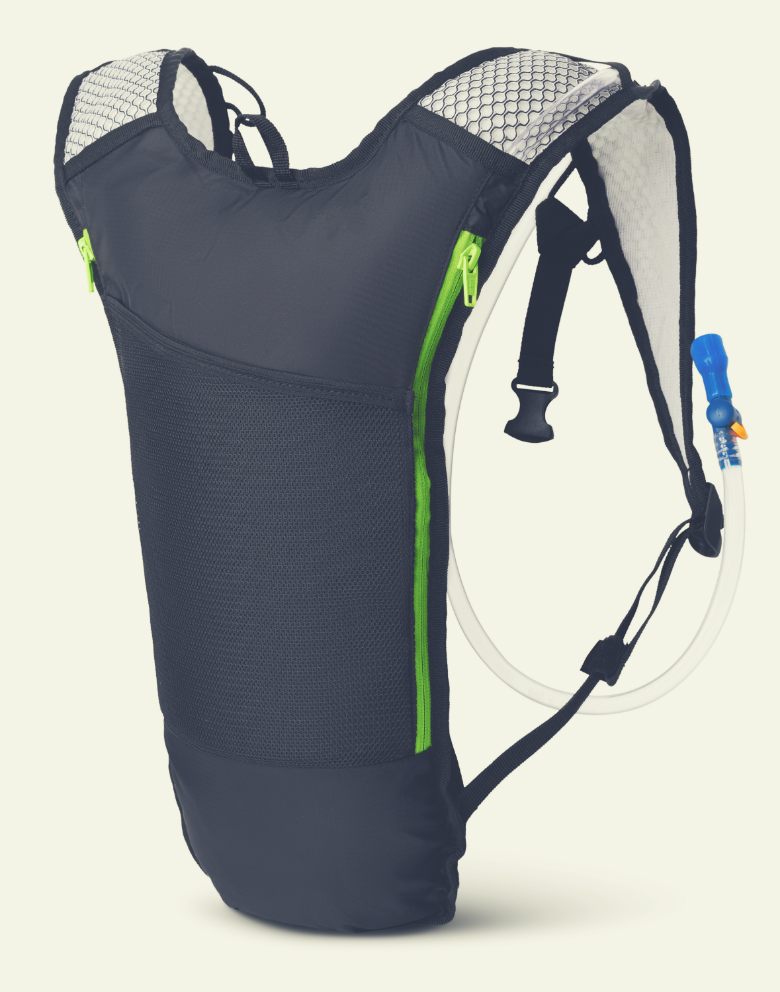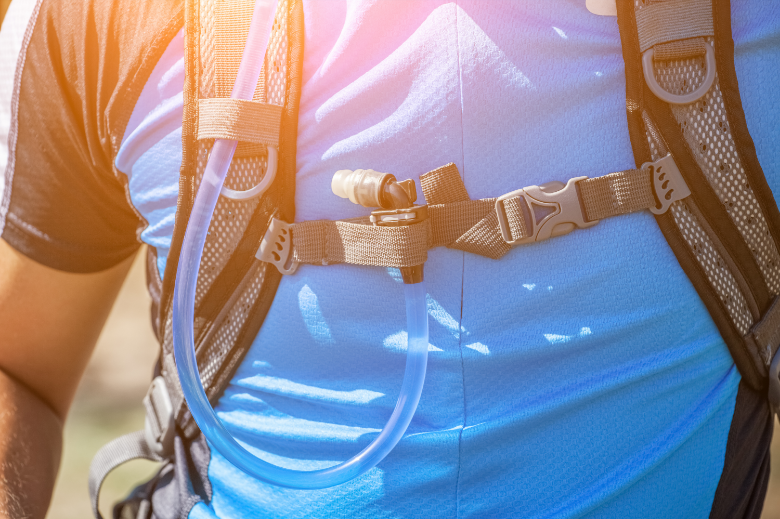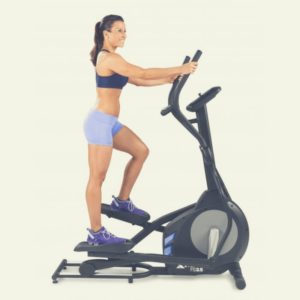If you are in a hurry and just want to find out what the best hydration pack for marathon running is, then I’d recommend the Mubasel Gear Lightweight Pack as the best one.
A hydration pack is a hands-free way to drink water while you run.
The best hydration pack for marathon running fits well and holds just the right amount of water.
Here are the top hydration packs we’ll be reviewing:
- TETON Sports TrailRunner 2.0 Hydration Backpack
- KUYOU Hydration Pack
- CHERAINTI Hydration Bladder
- Mubasel Gear Insulated Hydration Backpack
- Mubasel Gear Lightweight Pack

Staying Hydrated During a Marathon
When you participate in a marathon, your body will be in constant motion for around four hours.
Drink the right amount of water to keep yourself hydrated and full of energy for the entire race.
Symptoms of Dehydration
Dehydration happens when you lose more fluid than you drink.
Some dehydration is normal during exercise; dehydration becomes a medical concern when it causes extreme discomfort.
The first symptom of dehydration is usually dry mouth. From there, you’ll start to feel a little dizzy or light-headed.
If you stay hydrated, you’ll eventually get nauseous and fatigued.
Don’t wait until you feel these symptoms; instead, drink water before, during, and after your workout.
Can You Get Overhydrated?
Common wisdom used to dictate that you should drink as much water as possible during a race. Recent research has shown that this can actually be bad for your health.
Hyponatremia is a low-sodium condition caused by overhydration.
Hyponatremia shares many symptoms with dehydration; dizziness, fatigue, and nausea are all common.
The difference is that hyponatremia can result in cramps, brain swelling, and seizures.
In the modern day, overhydration is taken just as seriously as dehydration.
You need to drink a comfortable amount of water during your race without going too far in either direction.
How Much Water Should You Drink?
The right amount of water is enough to replenish the fluids that you lose by running. Drink less, and you’ll get dehydrated.
Drink more, and you’ll be overhydrated.
USA Track and Field has come up with a simple method to calculate your fluid loss called the USATF Self-Testing Program for Optimal Hydration.
How to Measure Your Optimal Fluid Intake
This test measures your fluid loss over a one-hour run. You can measure for any time you like, just write that number down.
Go to the bathroom before your first weigh-in, and don’t go again until after you weigh yourself a second time.
Weigh yourself right before your run, and weigh yourself immediately after. Subtract these two numbers to find how much fluid you lost.
Multiply this value by 15.3 to convert from pounds to ounces.
Check your water bottle to see how many ounces of liquid you drank. Add the amount of water that you drank during your run to the amount of fluid that you lost.
Your final value is the exact amount of water, in ounces, that you should drink across an hour. Most people run a marathon in 4-5 hours.
You can multiply your recommended fluid intake by your marathon time, or you can run a longer test to see exactly how much water you’ll need.
Average Fluid Intake
If you want to skip the math, assume that you sweat about 17 ounces in an hour. This translates to 85 ounces in a 5 hour marathon, or 2.5 liters of fluid.
Your fluid loss depends on the intensity and length of your workout. Measure your fluid intake regularly to make sure your numbers are accurate.
It’s fine to drink a little more or less; go with what your body is telling you.
Choosing a Hydration Pack
The best hydration pack for marathon running fits well, holds enough water, and is easy to clean.
Capacity
Did you calculate your optimal fluid intake?
The bladder of your hydration pack should be big enough to hold as much water as you will consume over the length of a marathon.
Don’t get a bigger pack; you don’t want the extra weight dragging you down.
The capacity of most hydration packs is measured in liters.
For easy math, a liter has about 34 ounces. 2 liters is the right size for most runners over an entire marathon.
Style and Comfort
Hydration packs come in many different styles. Find a pack that fits and doesn’t slide around.
Hydration backpacks are by far the most popular design. Some of these packs have extra room to store possessions; this is good for hiking and bad for running.
If you want a backpack, choose the smallest one that you can find.
Other considerations include breathable fabric and padded straps to prevent chafing.
You need enough straps to hold the backpack to your body, but too many straps might get in the way or cause you to overheat.
Maintenance
Hydration packs carry water in them, and where there’s water, there’s a chance that bacteria will grow. Look for a pack that’s easy to keep clean.
You should be able to wash out the reservoir and the drinking tubes. Some reservoirs are dishwasher safe; others feature a wide mouth that you can fit your hand inside.
Many packs have quick-release tubes that can be cleaned separately. Double-check the mouthpiece and the tube portals; these can be difficult to wash.
Mouthpiece
Many hydration packs feature a bite-release mouthpiece. Bite down to release water, and bite again to shut the water off.
This design has mixed reviews; it prevents leaks, but it can be very hard to use.
Other mouthpiece styles might include a cap to hold the water in.
Some mouthpieces work exactly like a straw; leakproof designs keep water from flowing out when you’re not applying suction.
Choose a mouthpiece that you feel comfortable using while you’re in motion.

What’s the Best Hydration Pack for Marathon Running
TETON Sports TrailRunner 2.0 Hydration Backpack
The TETON Sports TrailRunner 2.0 is a backpack style hydration pack made from breathable fabric.
The pack is comfortable and easy to adjust, and it weighs almost nothing.
Pros
- This pack carries 2 liters of water; that’s just enough for most runners.
- The hydration bladder has a wide opening and is easy to clean.
- The shoulder straps are made from breathable mesh.
- An extra mesh pocket lets you store your phone and wallet while you run.
- The backpack itself only weighs 14.4 ounces.
- You can easily replace the bladder if the first one breaks.
Cons
- The bladder is difficult to remove from the pack.
- The bite-release mouthpiece is very difficult to use; water doesn’t always flow as it should.
- The mesh pocket doesn’t seal, so your items might bounce out while you’re in motion.
- The straps are not padded and might be uncomfortable.
KUYOU Hydration Pack
The KUYOU Hydration Pack is a convenient hydration backpack with a simple design.
This backpack doesn’t use a bite-down mouthpiece, and it features a leak-proof dust cap.
You can buy the KUYOU pack in multiple different colors.
Pros
- This 2-liter pack is conveniently sized for most runners.
- Wide straps keep the stress off your shoulders, and the fabric is very breathable.
- The mouthpiece is very easy to use. No biting is needed, although you might need to squeeze to get the water flow started.
- The quick-release tube is detachable, and the bladder features a wide opening for cleaning.
- Internal pockets hold small possessions while you run.
Cons
- The straps are not padded and may cause discomfort.
- The reflective loop is not particularly visible.
- There is no chest strap to keep the pack tight against your body.
CHERAINTI Hydration Bladder
CHERAINTI Hydration Bladder is a leak-proof water reservoir that fits in most hydration packs.
If your old reservoir popped or broke, this is a good replacement.
Pros
- This reservoir has an extremely wide opening for cleaning.
- Double sealed edges mean that the bladder will not leak.
- The design is pressure-tolerant; it takes a lot to break this thing.
- The mouthpiece features a dust cover.
- The bag is temperature-resistant; your water won’t overheat.
Cons
- This product is just the water reservoir; it doesn’t come with a backpack.
- The mouthpiece uses a bite-release design.
- The bag claims to be 2 liters, but it tends to only hold around 1.6.
Mubasel Gear Insulated Hydration Backpack
Mubasel Gear Insulated Hydration Backpack is colorful, comfortable, and insulated. Sip on chilled water while you enjoy the breathable but padded design.
Adjustable straps mean that this pack can fit any runner.
Pros
- An insulated design keeps your water cool while you run.
- Three storage compartments let you store your posessions.
- Two of the compartments can be accessed from the front of the bag.
- The drinking tube is durable and easy to use.
- The package include a snake tool to clean your drinking hose.
- The bladder holds almost 2.5 liters; this pack is a good choice for thirstier runners.
- The padded design does not chafe while you move.
Cons
- The padding is comfortable, but you might overheat while running.
- Extra straps might get in the way while you run.
- Extensive use may cause the hose port to start leaking.
Mubasel Gear Hydration Backpack
Featuring the quality design that Mubasel Gear is known for, the Mubasel Gear Hydration Backpack is great for runners.
The backpack design is smaller and has fewer straps. Enjoy ice-cold water, wide shoulder straps, and restriction-free running.
Pros
- Before it’s filled, this entire pack weighs 0.7 lbs.
- This hydration backpack is extremely breathable.
- Internal insulation keeps your water cool for several hours.
- Multiple zipper pouches and a front mesh pocket store your possessions.
- The bag is small enough to put in a small fridge, so you can cool it down before your run.
Cons
- This pack doesn’t have a waist strap, and it might bounce while you run.
- There is no hose cover; water in the hose will heat with sun exposure.
- Position the hose before you fill the reservoir for the best results.
Wrapping Up: The Best Hydration Pack for Marathon Running
A good hydration pack needs to fit well and hold plenty of water.
Most hydration packs claim to hold 2 liters, but the actual capacity depends on the flexibility of the material and the size of the backpack.
Out of the items on this list, the Mubasel Gear Lightweight Pack is definitely the best hydration pack for marathon running.
The lightweight design won’t hold you back while you run at top speed.
The reservoir holds plenty of water, and it has the added benefit of keeping your water cool throughout the day.
The shoulder straps are padded, but they’re breathable enough to keep you from overheating.
Check out the Mubasel Gear Lightweight Pack before your next big race. If you buy the pack early, you’ll have plenty of time to practice wearing it while you run.










